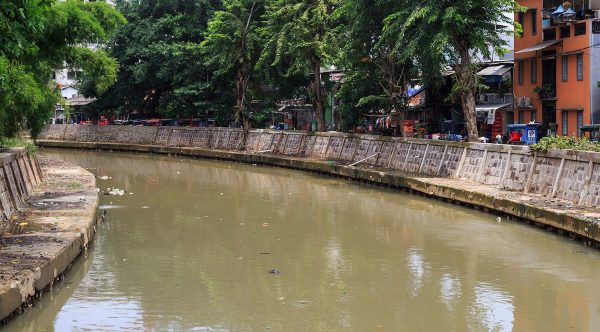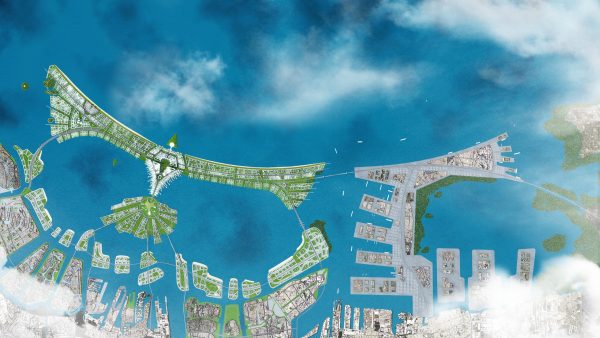Jakarta is a coastal city run through with rivers, yet paradoxically: the city is sinking in no small part due to a lack of water as well. As residents pull water to drink from underground aquifers, the city settles — in some places dropping inches each year. At its current rate of descent, most of the city will be flooded in the next few decades. The modern concrete-paved cityscape plays a big part in hindering rainwater from refilling aquifers, but the problems didn’t start there.
Back in the 1600s, Dutch imperialists took over what is now Jakarta and rebuilt the city using a familiar feature: canals. In the process, the city was divided, in part for the defense of the colonizers. But over time, the canals began to deteriorate, the water grew stagnant, and diseases spread. Most Dutch occupiers moved inland and began piping in their own freshwater, leaving the native population to fend for themselves.

It wasn’t until the middle of the 20th century that the Netherlands finally acknowledged Indonesia’s independence, but what they left in their wake was a place that continued to lack sufficient water infrastructure. Meanwhile, the population was booming and drawing ever more water from pumps, in turn leading the city to settle ever lower. Over the last decade, parts of this metropolis have sunk close to 10 feet. Many buildings lie partially or entirely submerged and have been abandoned to the elements, while informal bridges have sprouted up in places to link areas still above land (at least for now).

In recent years, there have been attempts to shore up the water-facing edges of the city, but so far not enough seawalls have been created — indeed, it may well be impossible for walls to fix the issue at all. Among other issues, extant seawalls are (like much of the city) sinking as well. Experts also say a seawall approach is a temporary fix at best — a way to stave off the worst while letting subsidence continue to sink the city.
North Jakarta is home to nearly 2,000,000 people and has historically been one of the busiest sea ports in the region. But despite its population and economic importance, the local government only provides about 40% of the city’s water. To stop or slow the sinking of Jakarta, that percent will have to grow rapidly in the coming years, so that citizens don’t need to pump up groundwater and exacerbate current problems. There are also technologies to route water back deep into the ground (replenishing aquifers below) that could be used. But while such strategies have helped other cities and countries, they are expensive and a tough sell, even if they may be the city’s best hope.



Leave a Comment
Share